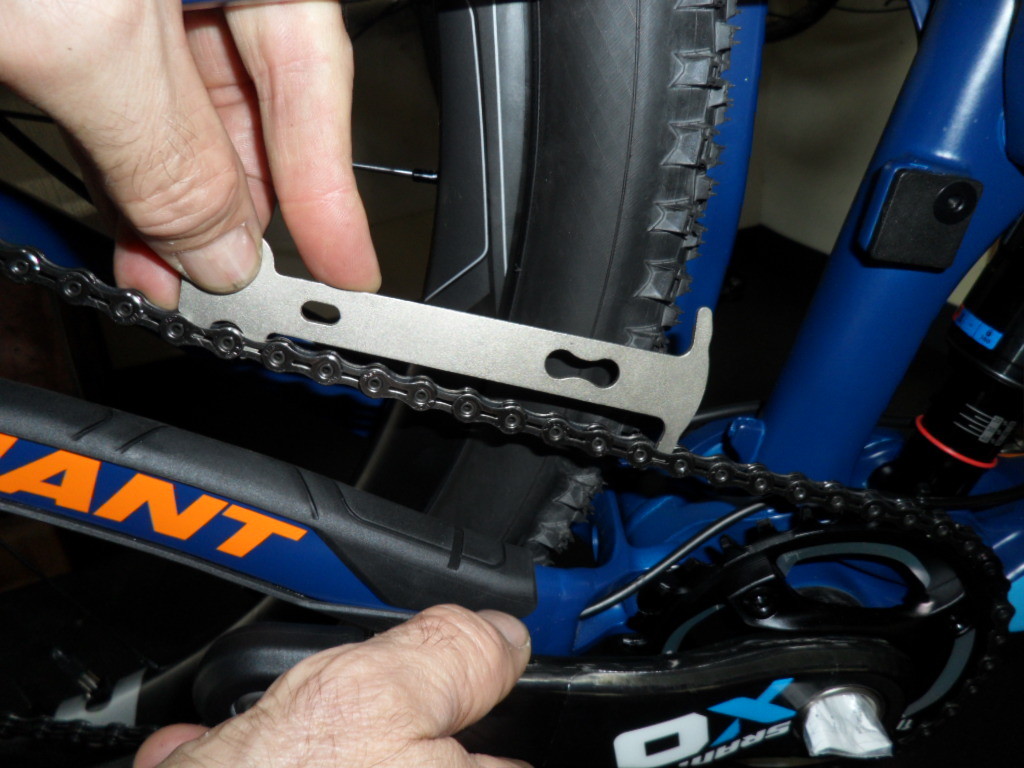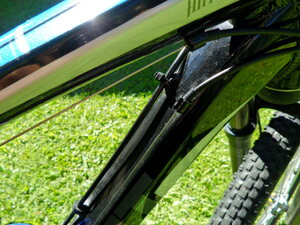Chain and Cable Wear
Chain and cable wear are important basic concepts in bicycle maintenance. Mechanical wear on your bicycle means you inevitably need to replace parts from time to time. Two items that need attention most often are the chain and cables. For chains in particular, timely replacement can save you money because it allows you to replace other, higher-cost components less often.

A simple chain gauge, suitable for testing chain wear at the 0.75% or 1.0% level. When the tool slips easily between the links, the chain is worn to the level indicated.
Chain Wear
Wear on your chain occurs as a result of friction between the rollers and pins. This leads to a loss of material and a loose fit between the moving parts. This increases the effective spacing between links in the chain, as though the chain had stretched. The result is that the chain no longer meshes well with the sprockets. This causes reciprocal wear on the front chain rings and the rear cassette. If this goes on long enough, when you replace the chain, the new chain won’t mesh with the old sprockets and will skip. You will then need to replace the cassette along with the chain, at a higher cost than replacing the chain alone sooner.
How do you know when to replace your chain? One of the simplest ways is to use a chain gauge. By slipping the gauge between the links of the chain, you can see if chain wear is above the marked level. Typically, you should replace a chain if the wear is above 0.75%. Depending how often you ride, for example if you commute to work by bike, you might reach this level of wear in 6 to 12 months.

Different manufacturers and models often have different cable routing. With this model, some cable inners are exposed and the cable outer is capped to minimize entry of dirt or water.
Cable Wear
Bicycle cables have inner and outer elements, with cable routing varying from one manufacturer and model to another. In some bikes, the cable inner is exposed over part of its length. Other bike designs encase the cables over the full length.
Over time, friction between the cable inner and the cable outer sleeve creates grooves. The grooves inhibit free movement of the cable inner, which then tends to stick. When this happens, you will have difficulty changing gears or braking (for cable brakes). Replacing the cables makes the movement much smoother. This low-cost maintenance step will thus have a marked effect on your riding enjoyment.
Chain replacement and new cable fitting are part of regular bicycle maintenance. They are important to keep your bike running smoothly. Bike Knack provides chain and cable checks and replacement, along with general bicycle service, from our Salisbury workshop. You can find labour prices in our Pricing Table.
Book A Service
